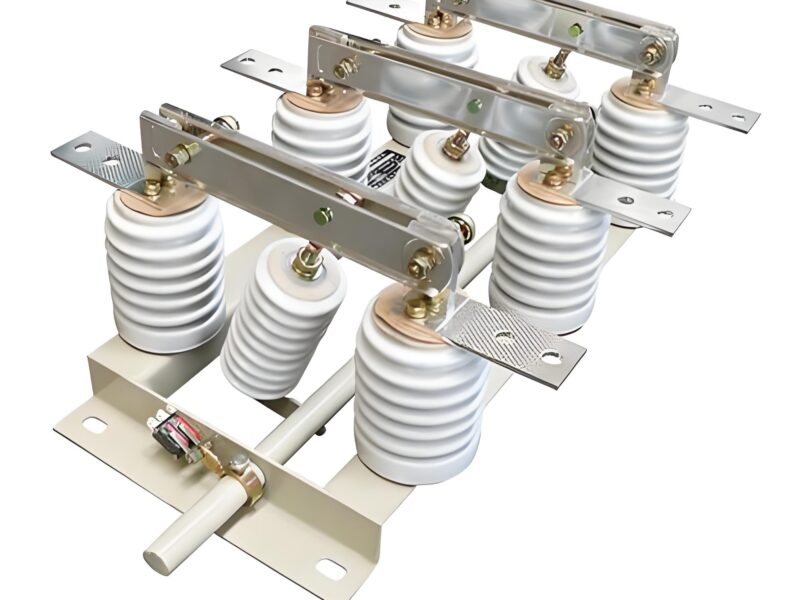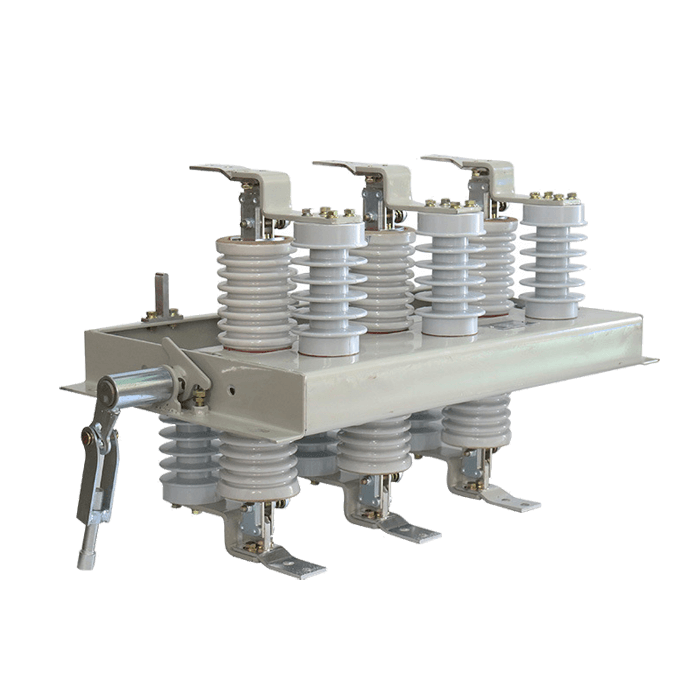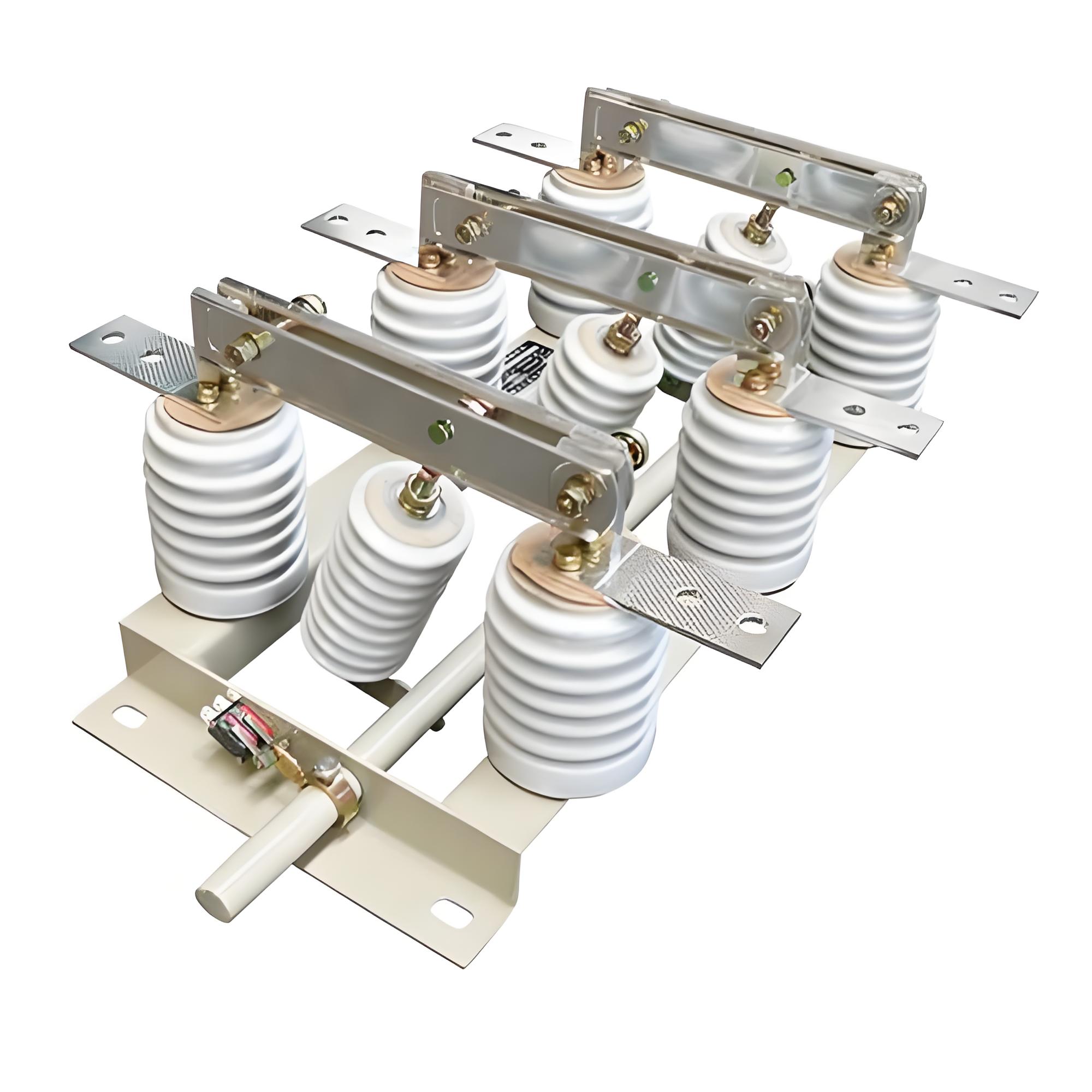
Technical Requirements and Selection Criteria for Disconnecting Switches in 12kV Medium-Voltage Switchgear Cabinets
I. Electrical Parameter Adaptation for 12kV Systems
In 12kV medium-voltage switchgear cabinets, the technical requirements and selection of disconnecting switches are crucial. Firstly, voltage rating matching is a fundamental requirement. The disconnecting switch must meet the maximum operating voltage of the 12kV system (typically 10kV) to ensure stable and reliable performance under normal operating conditions. Additionally, the power-frequency withstand voltage of the contact gap should be no less than 42kV/1min, and the lightning impulse withstand voltage should be no less than 75kV. These parameters guarantee the safety performance of the disconnecting switch in extreme electrical environments.
Current-carrying capacity is also important. According to GB3906 specifications, for a 630A/12kV disconnecting switch, the contact resistance should not exceed 50μΩ to ensure efficient current transmission. In temperature rise tests, the temperature rise of the conductive circuit should be controlled within 65K (based on an ambient temperature of 40°C) to avoid equipment damage or safety hazards due to overheating.

II. Structural Type Selection
Disconnecting switches come in various structural types, and the choice depends on specific application scenarios and requirements.
-
Rotating disconnecting switches (such as GN30-12) adopt a vertical rotating structure with a switching angle of 120° and a contact pressure not less than 200N. This structure is suitable for XGN2-12 fixed cabinets, featuring a compact structure and easy operation. Its mechanical life can reach 5,000 cycles, ensuring long-term reliability.
-
Withdrawable disconnecting switches (such as KYN28A-12 disconnector trucks) are equipped with a multi-contact tulip contact system (with no fewer than 20 contact points) and form a mechanical interlock with circuit breaker trucks, ensuring correct operating sequences. This structure is particularly suitable for equipment requiring frequent replacement or maintenance.
-
Outdoor pole-mounted disconnecting switches (such as GW9-12) have a long creepage distance (no less than 310mm, meeting the requirements of pollution level IV) and strong ice-breaking capabilities (up to 10mm), suitable for severely cold regions with temperatures as low as -40°C. Their sturdy structure can withstand harsh natural environments.
III. Special Function Configurations
Besides basic electrical parameters and structural requirements, special function configurations are also important factors to consider during selection.
-
Grounding interlock system: Load-side disconnecting switches and grounding switches should be equipped with mechanical interlocks to ensure that the disconnecting switch is in the grounded position before the cable compartment door is opened, preventing electric shock accidents.
-
Intelligent monitoring module: Integrated with wireless temperature sensors (with a monitoring accuracy of ±1°C), it monitors equipment temperature in real-time to prevent overheating faults. Meanwhile, the electric operating mechanism should be equipped with double-confirmation contacts for position status to ensure accurate feedback of the operating state.
IV. Typical Application Scenarios
Disconnecting switches play different roles in different application scenarios.
-
Dual power supply switching systems: Equipped with two sets of GN22-12 disconnecting switches, they realize automatic switching between primary and backup power supplies. The switching time is no more than 30 seconds, meeting the requirements for continuous power supply to critical loads and ensuring stable operation of important equipment.
-
Ring main unit supply systems: Using HGW1-12 disconnecting switch assemblies to construct a ring network topology, the fault isolation time is no more than 2 seconds, significantly improving power supply reliability (up to 99.99%). This structure is widely used in urban power grids, industrial parks, and other occasions.
-
Distributed power supply access: Load-side disconnecting switches need to be equipped with anti-reverse power transmission locking devices to prevent safety hazards caused by distributed power sources feeding back into the grid. At the same time, the device must be able to withstand reverse short-circuit current impacts of 20kA/2s, ensuring the safe and stable operation of the power grid.
V. Installation and Maintenance Specifications
To ensure the long-term stable operation of disconnecting switches, installation and maintenance work cannot be ignored.
-
Mechanical characteristic testing: The operating torque for opening and closing should be controlled within 150N·m (for manual operating mechanisms) to ensure ease of operation and reliability. At the same time, the three-phase out-of-synchronism should not exceed 3ms to avoid equipment damage due to asynchronous operation.
-
Insulation maintenance requirements: The insulation surface should be cleaned annually to remove dirt, ensuring that the surface insulation resistance is not less than 1000MΩ. For silicone rubber insulation parts, water repellency testing should be performed with a testing cycle not exceeding five years. These measures help maintain the stability and reliability of insulation performance.
-
Safety warnings and operational safety: 12kV disconnecting switches must not be operated under load! When the line current exceeds 0.5A, the arc energy during disconnection can reach 50-100kJ, potentially causing inter-phase flashover accidents. Therefore, double interlocks (mechanical + electrical) must be used to ensure operational safety. During operation, strict adherence to operating procedures and safety specifications is essential to ensure the safety of personnel and equipment.
In summary, the technical requirements and selection criteria for disconnecting switches in 12kV medium-voltage switchgear cabinets involve multiple aspects, including electrical parameter adaptation, structural type selection, special function configurations, typical application scenarios, and installation and maintenance specifications. Only by comprehensively considering these factors can the selected disconnecting switch perform optimally in practical applications, providing strong support for the safe and stable operation of the power system.

